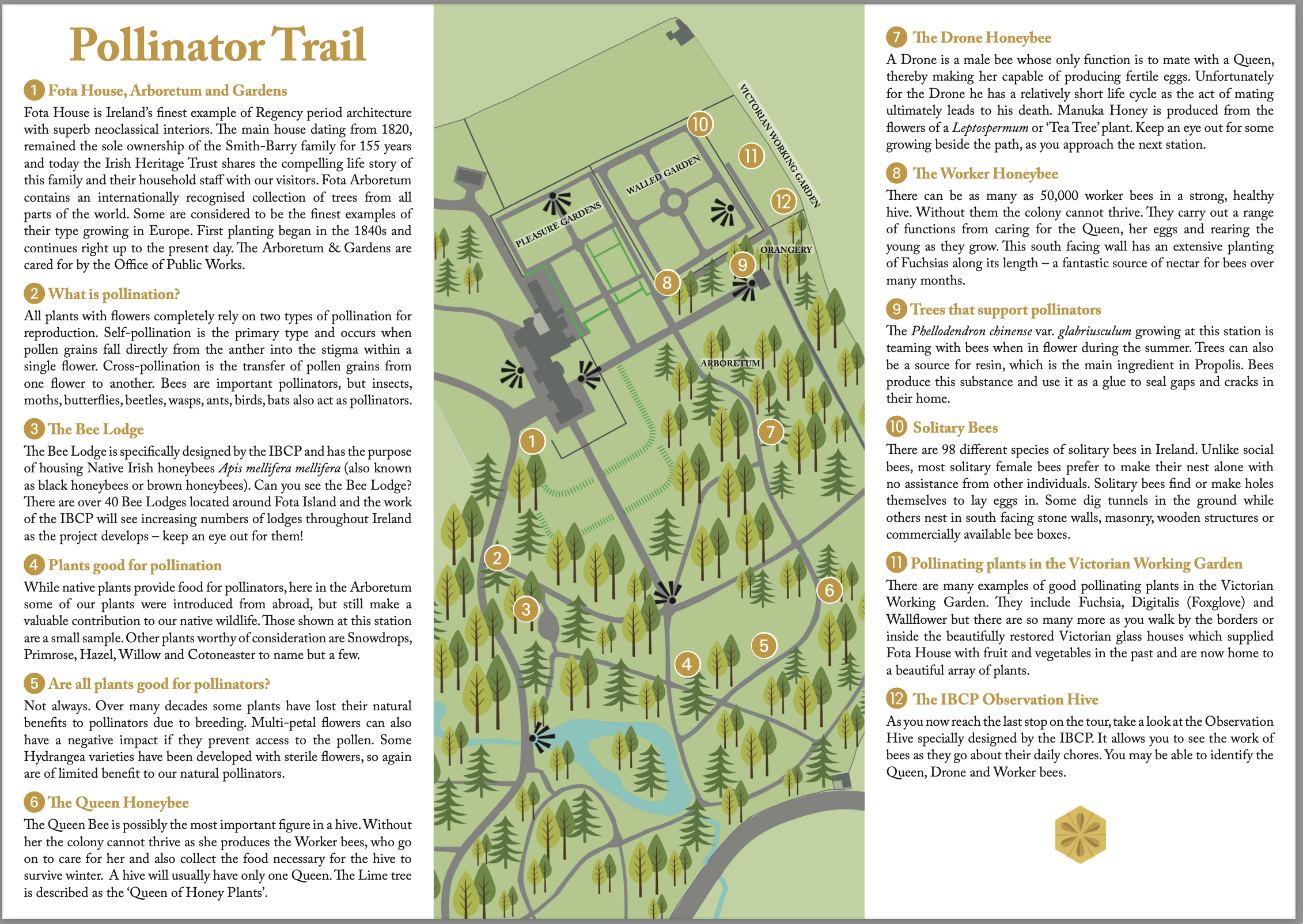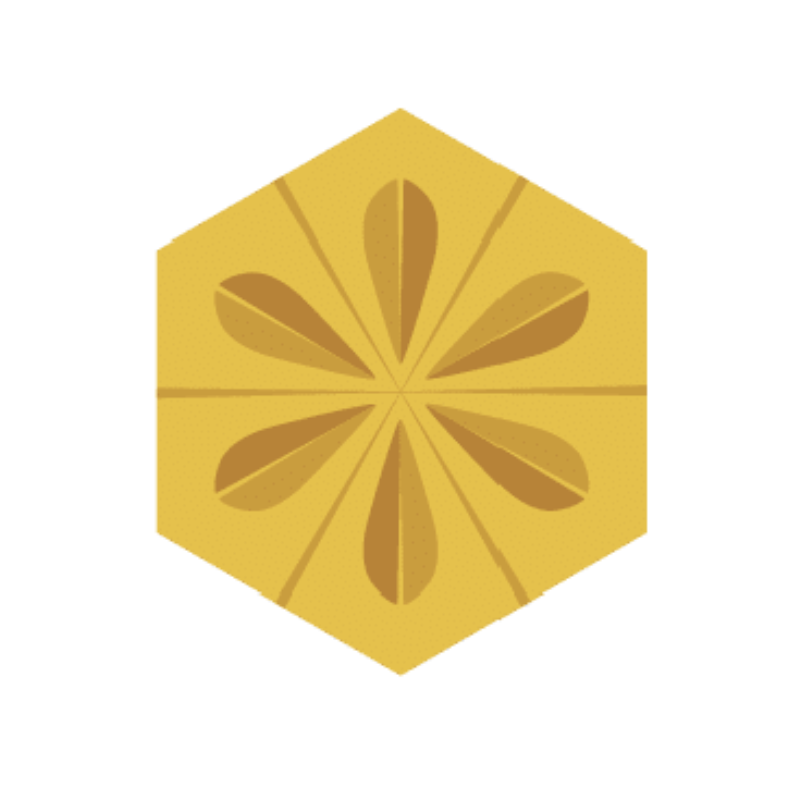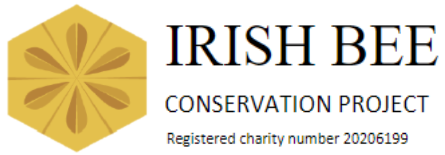Fota Pollinator Trail – Station 06
The Queen Honeybee
The Queen Bee is possibly the most important figure in a hive. Without her the colony cannot thrive as she produces the Worker bees, who go on to care for her and collect the food necessary for the hive to survive winter. A hive will usually have only one Queen.
This station is at the base of a large Tilia x europea (Lime/Linden Tree). This tree is the result of a cross between two other European native trees, T. cordata & T. platyphyllos. When in flower the bee activity is audible from the ground, such are the large numbers that will be working through the flowers, drawn to it by the abundance of nectar. Lime tree honey is a recognised product and the tree itself is described as the “Queen of Honey Plants”.
Role of the Queen Bee
The Queen bee who is female, is a central figure in the hive. There is usually only one Queen in a hive because as soon as a Queen is born its first duty is to seek rivals and kill them. The presence of a Queen is recognised by her Queen Substance. This contains Pheromones (chemicals that can alter the behaviour of other bees). The Worker bees can receive this by rubbing against the queen or licking it off of her coat. Workers can also pass it to other Worker bees when they are food sharing.
Queen Substance is important for maintaining colony structure. When present it prevents them for raising new Queens. It can also attract Drone bees when the Queen bee is on a mating flight and holds swarms together as well as providing a calming influence on bees in her hive. When bees swarm they leave the hive with the Queen and up to two-thirds of the bees in the hive leave in the swarm. Consequently, the Worker bees must get a new queen.
So where do they get this new Queen?
They take a young egg (Ideally 12 hours old but certainly less than 36 hours) laid by the Queen that has left the hive and they feed this a lot more Brood Food (also known as Royal Jelly) than a normal Worker bee would be fed.
This has the effect of producing a larger bee that is capable of mating with Drones – a new Queen bee. Brood Food comes from glands inside the worker bees head known as Hypopharangeal glands and from the Mandibular Glands which are located inside the jaw of Worker bees.
This hatches on Day 16. After 4 -5 days the workers kick out the new Queen to go on her mating flights. She meets up with Drones in a place where Drones are flying called a Drone Congregation Area.
Mating
A new Queen can mate with up to 20 drones on 2-3 mating flights until her spermatheca (a place for storing sperm) is full. The outside temperature must be >16 degrees Centigrade for mating to take place. The fact that she mates with so many Drones ensures there will be genetic diversity in the hive.
Once back in the hive she will now spend the rest of her life as an egg-laying ‘machine’. She can lay up to 2000 eggs per day! During summer bee numbers can rise to over 50,000 in a strong hive.



